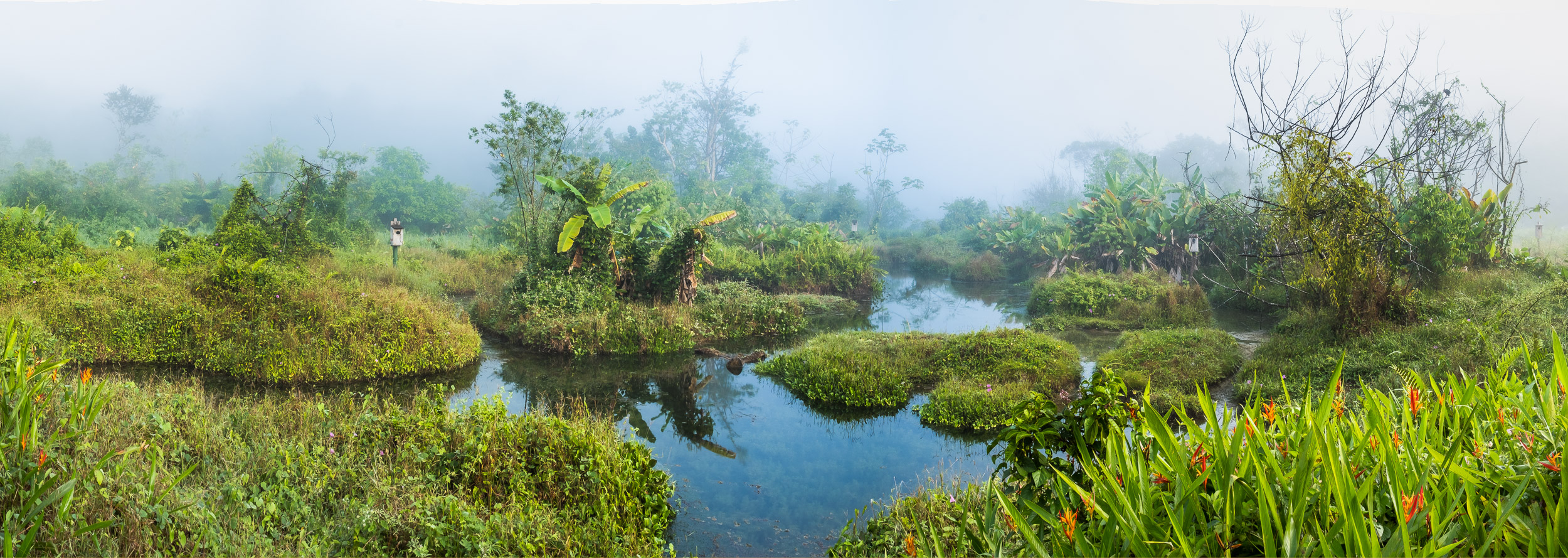Biodiversity is crucial to our survival. Conserving remaining natural habitats and actively restoring destroyed habitats is one of the most efficient methods to protect and enhance biodiversity.
At the Refugio, we developed and tested an approach which combines several interconnected methods: microorganisms, biochar, nitrogen fixers, pioneer trees, plants that draw minerals from the depth of the soil, mulching weeds instead of uprooting them, and succession. We successfully restored 24 hectares at the Refugio in record time and kept the failure rate of young trees in our reforestation below 4% – for comparison, a failure rate of over 10% is often considered normal in this area.
The rapidly increasing faunal biodiversity is also encouraging: several rare or endangered species have recovered and are breeding here, including currassows, boat-billed herons, green ibis and many more. River otter, ozelot and the greater grison (the rarest mammal in Costa Rica) are some of the most exciting sightings of mammals in the Refugio. AMISTOSA, a government project creating biological corridors, supports us with camera traps in documenting the number of species.
Reaching beyond our borders
Biological corridors are necessary for the many animals that don’t dare to cross open areas. By connecting protected wooded areas, like national parks and forest reserves, animals can roam freely between them which prevents inbreeding and ensures genetic diversity.
The government of Costa Rica proposed several areas for such corridors: one of them is AMISTOSA, connecting the national parks Corcovado, Piedras Blancas and La Amistad. It covers an area of 50,000km2 and as we are located within that area we want to contribute to its reforestation.
Depending on soil conditions and other circumstances, different areas require different combinations of tree species and different approaches in reforestation, ranging from complete reforestation to island reforestation and, In some cases, even leaving the land undisturbed to recover by itself.
Our basic approach for reforestation is illustrated in the short animation below:
‘Island reforestation’ is a method, where only patches of reforestation are established in reasonable distances. Birds and mammals drop seeds in between these ‘islands’ which then recover in a natural way.
Especially sensitive areas are wetlands, the most endangered habitats in the world. If leaving them undisturbed for self-recovery is not appropriate, they require careful landscaping, phytoremediation and a very selected choice of trees. We successfully reforested several hectares of wetland in the Refugio without draining the land.
The simplest and least expensive approach is to acquire land, legally protect it by declaring it an ecological protection area and leave it undisturbed to recover by itself. In Costa Rica a special law (‘Servidumbre Ecológica’) protects such a land permanently.
Help us to make the next step!
We are thankful for your support! You can donate to this project with the button below. If you have any questions, please get in touch.
.
.





